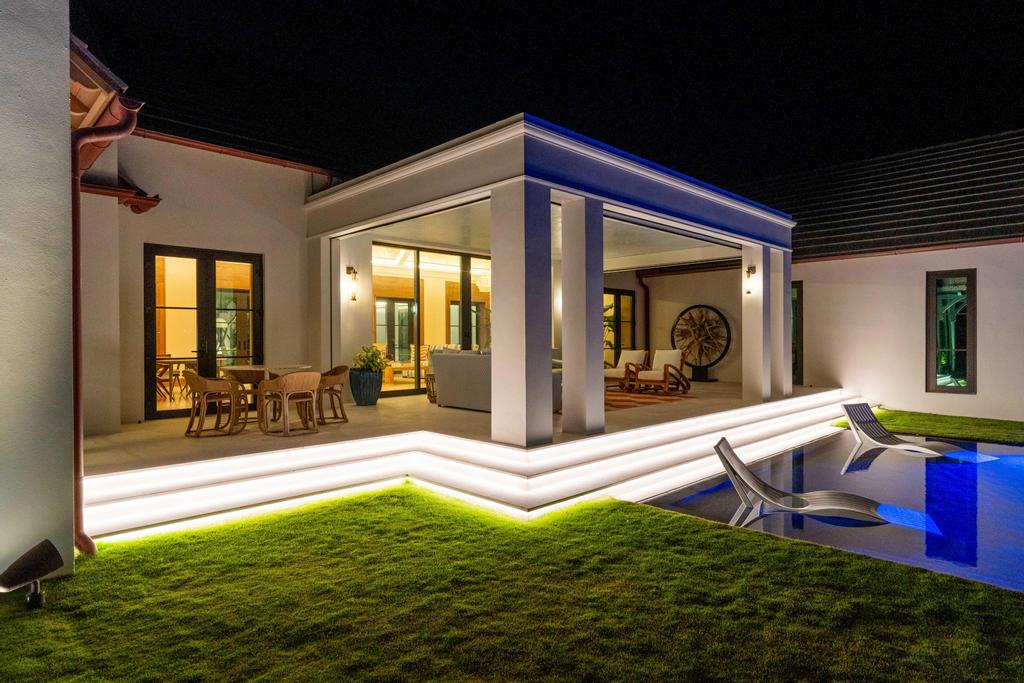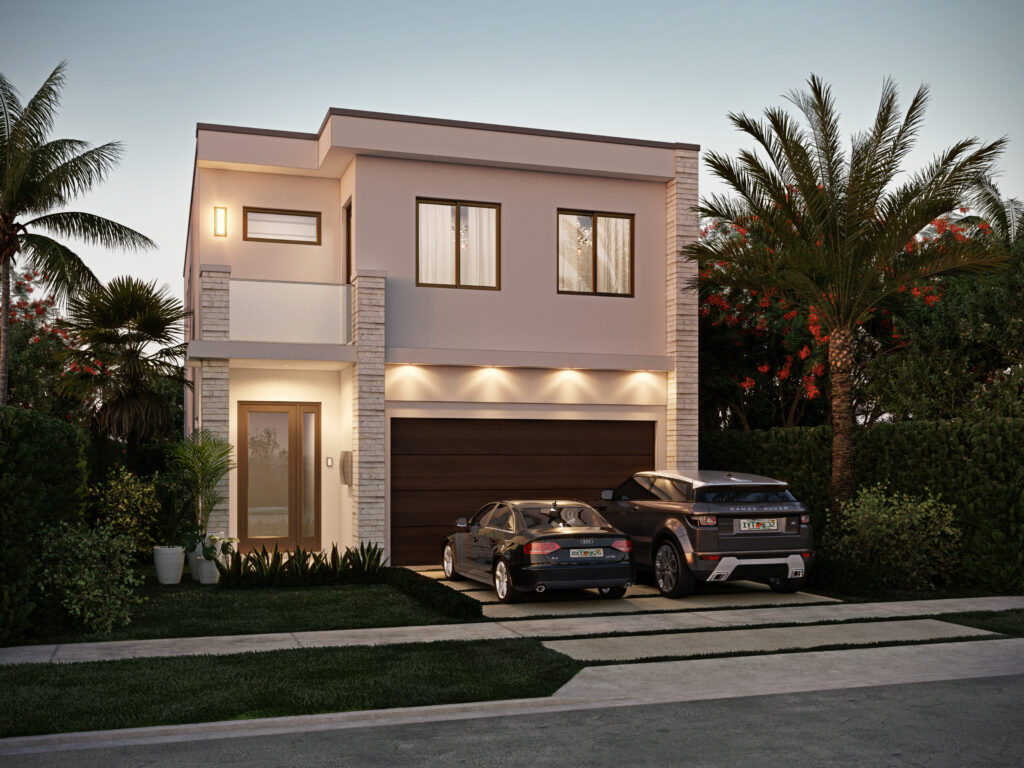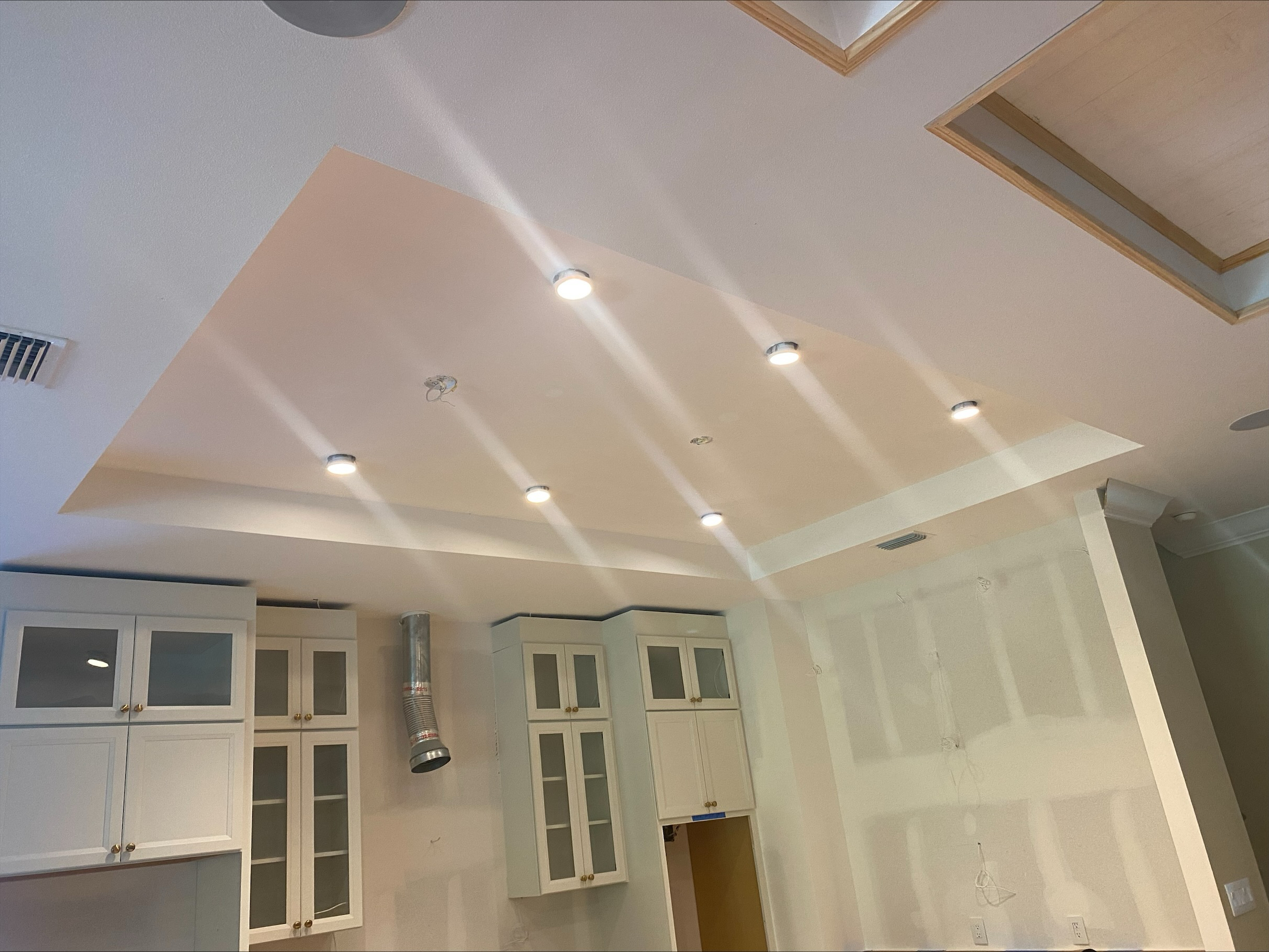When it comes to landscape lighting, one of the most common questions homeowners and designers alike grapple with is, “How far apart should landscape lights be?” This seemingly simple query holds significant importance, as proper spacing enhances the aesthetic appeal of your outdoor spaces and ensures safety, efficiency, and optimal functionality. This comprehensive guide will delve into the key factors to consider when spacing landscape lights, providing expert advice from an electrician’s perspective.

Understanding the Purpose of Your Landscape Lighting
Before determining the spacing of your landscape lights, it’s crucial to understand the purpose behind your lighting design. Are you illuminating a pathway to enhance safety and navigation? Or are you highlighting a garden feature or architectural element? Different lighting objectives require different approaches to spacing.
For instance, path lights are typically spaced closer together to ensure continuous illumination and prevent dark spots along the walkway. In contrast, accent lights used to highlight trees or sculptures may be spaced farther apart, as they draw attention to specific focal points rather than provide uniform lighting.
By clearly defining the purpose of your landscape lighting, you’ll have a better foundation for determining the appropriate spacing between lights.

Factors Influencing Landscape Light Spacing
Several factors come into play when deciding how far apart landscape lights should be. Understanding these factors will help you achieve a balanced and harmonious lighting design that meets both functional and aesthetic needs.
Light Intensity and Beam Spread: The intensity of the light and the spread of its beam significantly impact spacing. A fixture with a wide beam spread will cover more area, allowing for greater spacing between lights. Conversely, a fixture with a narrow beam spread will require closer spacing to avoid gaps in illumination.
Light Type and Function: Different types of landscape lights serve various functions, from path lighting to accent and wall wash lighting. Each type has specific spacing guidelines based on its purpose. For example, path lights generally need to be placed every 5 to 8 feet to ensure even coverage, while accent lights might be spaced further apart depending on the size of the object being highlighted.
Landscape Features and Obstacles: The layout of your landscape, including features like plants, trees, walls, and slopes, can affect how light is distributed. Obstacles such as large shrubs or uneven terrain may require adjustments in spacing to ensure consistent lighting coverage.
Desired Lighting Effect: The ambiance you wish to create also plays a role in spacing. Lights can be placed closer together for a more dramatic and defined look, while a softer, more subtle effect may be achieved by spacing lights further apart.
When you consider all of the factors surrounding the spacing of your landscape lighting, it will clearly indicate how far apart landscape lights should be. When surveying your property, be sure to note all of the important details and be prepared to make some decisions. Nonetheless, it would be nicer to know the ideal spacing.

Ideal Spacing for Different Landscape Lights
As we survey the property and investigate all of the technical factors surrounding your landscape lighting, let’s explore the recommended spacing for various types of landscape lights, keeping in mind the factors mentioned above.
Pathway Lighting: For pathway lighting, the goal is to provide safe and clear visibility along walkways. The recommended spacing for path lights is typically between 5 to 8 feet apart. This distance ensures overlapping light patterns, eliminating dark spots and creating a continuous line of light. If the path has curves or elevation changes, you may need to adjust the spacing accordingly.
Accent Lighting: Accent lights are used to highlight specific features like trees, statues, or architectural elements. The spacing for accent lights can vary depending on the size and height of the object. A general rule of thumb is to place the lights about 10 to 15 feet apart, but this can be adjusted based on the desired effect. For taller trees, you might want to space the lights closer together to ensure even illumination from top to bottom.
Wall Wash Lighting: Wall wash lights are used to illuminate walls, fences, or other flat surfaces. These lights should be spaced evenly to create a smooth and consistent wash of light. The recommended spacing for wall wash lights is usually between 8 to 12 feet apart, depending on the height of the wall and the intensity of the light.
Spot Lighting: Spotlights are more focused and typically used to draw attention to a particular feature or area. The spacing for spotlights can be more flexible, depending on the size of the area being lit and the beam spread of the light. Typically, spotlights should be spaced about 15 to 20 feet apart, but this can vary based on the specifics of the project.

Common Mistakes in Landscape Light Spacing
When planning your landscape lighting, there are a few common mistakes to avoid that can affect the overall effectiveness and appearance of your lighting design.
Over-spacing Lights: One of the most common mistakes is placing lights too far apart, leading to dark spots and uneven lighting. This can detract from the beauty of your landscape and reduce the functionality of your lighting design. It’s better to err on the side of closer spacing, especially in areas where safety is a concern, such as pathways and stairs.
Under-spacing Lights: On the other hand, placing lights too close together can lead to excessive brightness and glare, making the space uncomfortable to navigate. Properly spaced lights should provide a balanced level of illumination that enhances the landscape without overwhelming it.
Ignoring Landscape Features: Failing to account for features like plants, trees, or elevation changes can result in inconsistent lighting. It’s important to adjust spacing as needed to accommodate these elements and ensure even coverage across the entire area.

Tips for Achieving the Perfect Landscape Lighting Design
Achieving the perfect landscape lighting design requires a combination of planning, knowledge, and creativity. Here are some tips to help you get it right:
Create a Lighting Plan: Start by mapping out your landscape and identifying the areas you want to illuminate. This will help you determine the number and type of lights you need, as well as their ideal placement and spacing.
Test Your Design: Before finalizing the installation, it’s a good idea to test your lighting design. Place the lights temporarily in their intended locations and check the coverage and effect at night. This will allow you to make any necessary adjustments to spacing before committing to the final installation.
Consult with a Professional: If you’re unsure about the spacing or placement of your landscape lights, consider consulting with a professional electrician or landscape lighting designer. They can provide expert advice and ensure your lighting design is both functional and visually appealing.

Conclusion: Striking the Right Balance
So, how far apart should landscape lights be? The answer depends on various factors, including the type of light, its purpose, and the features of your landscape. By understanding these factors and following the guidelines provided in this article, you can achieve a well-balanced and effective landscape lighting design that enhances the beauty and functionality of your outdoor spaces.
At Others Electric, we specialize in creating customized lighting solutions that bring out the best in your landscape. Whether you’re lighting a small garden path or an expansive estate, our team of experienced electricians is here to help you strike the perfect balance between form and function.







